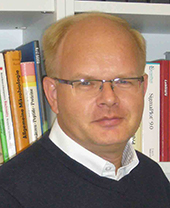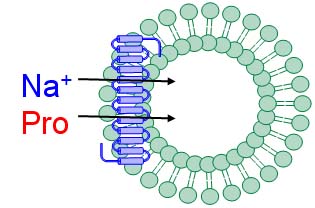The sodium/proline transporter PutP is a member of the sodium/solute symporter (SSS) family (TC 2A.21, SLC5), which contains more than 1000 proteins of pro- and eukaryotic origin. Within the family, the capability of proline uptake is restricted to proteins of bacteria and archaea. Here, proline uptake via PutP may contribute to: i. the use of proline as source of carbon, nitrogen and energy; ii. the supply of cells with compatible solute during adaptation to osmotic stress; or iii. the modulation of the intracellular redox environment and scavenging of reactive oxygen species. Based on these functions, PutP can be of significance for bacteria-host interactions including the virulence of pathogens like as Helicobacter pylori, Staphylococcus aureus and others.
mehr




